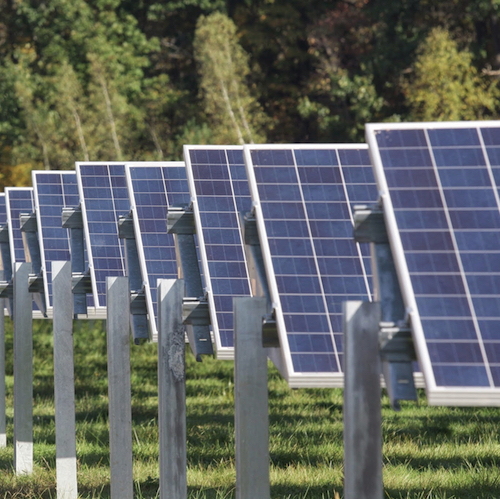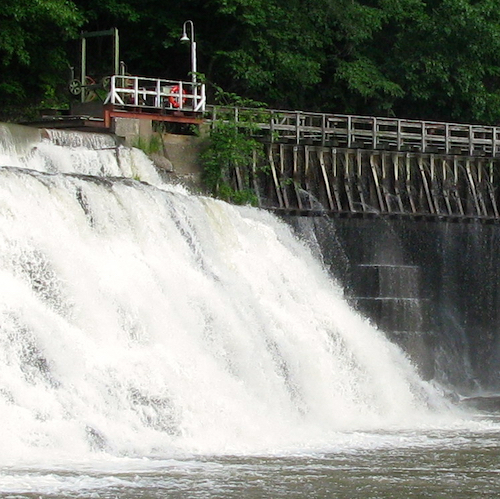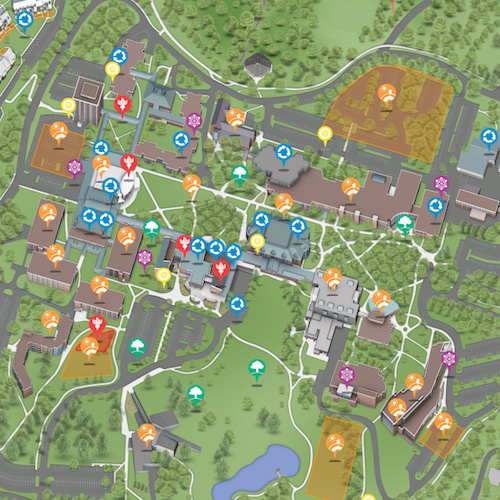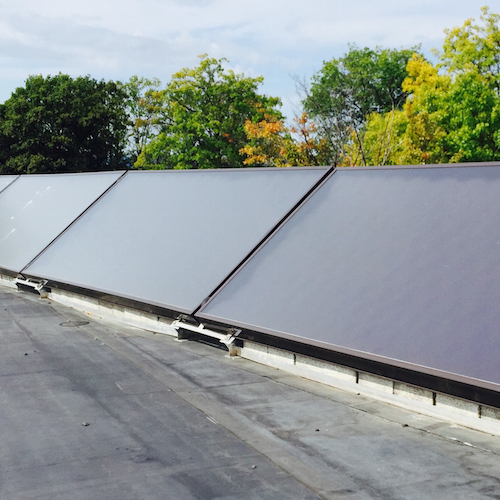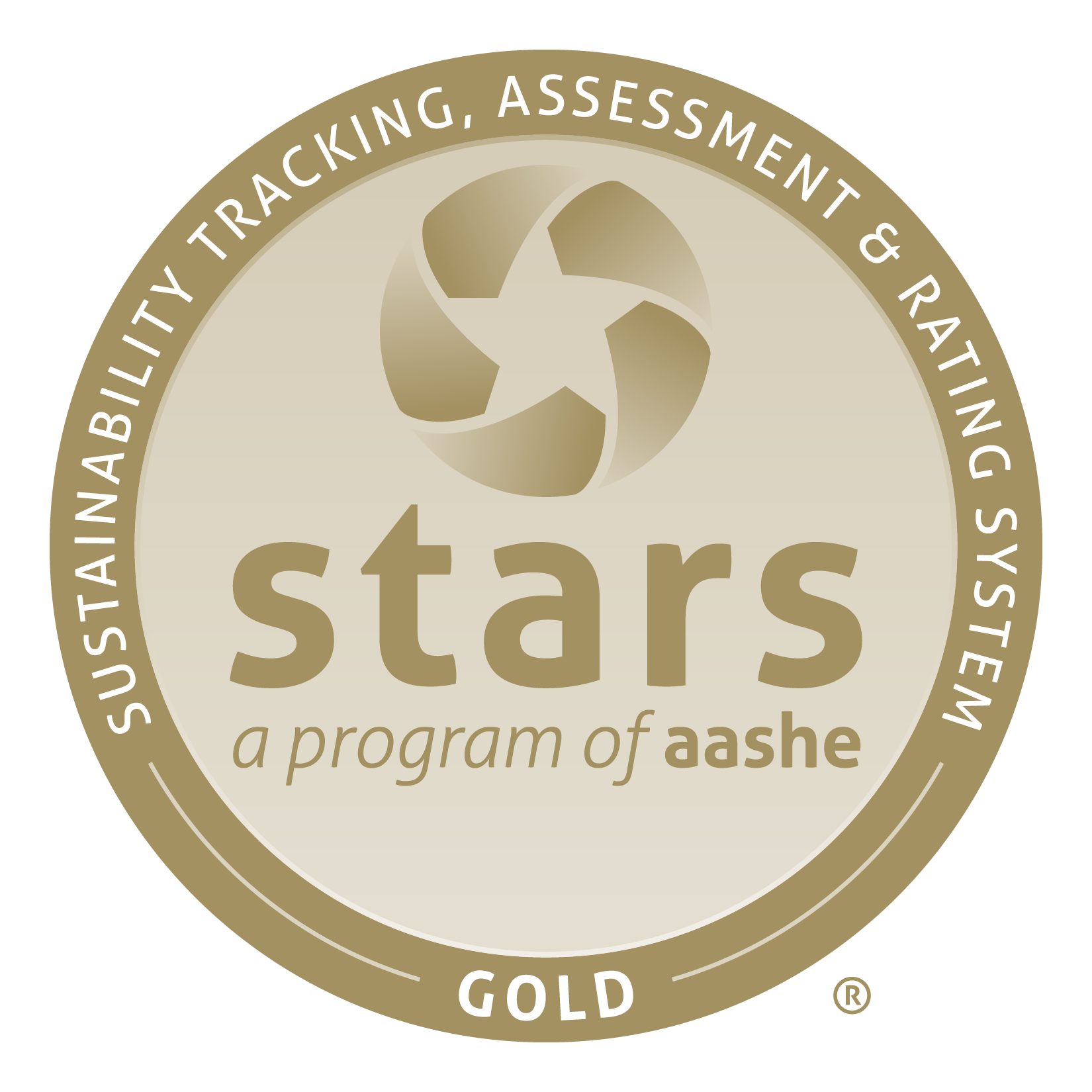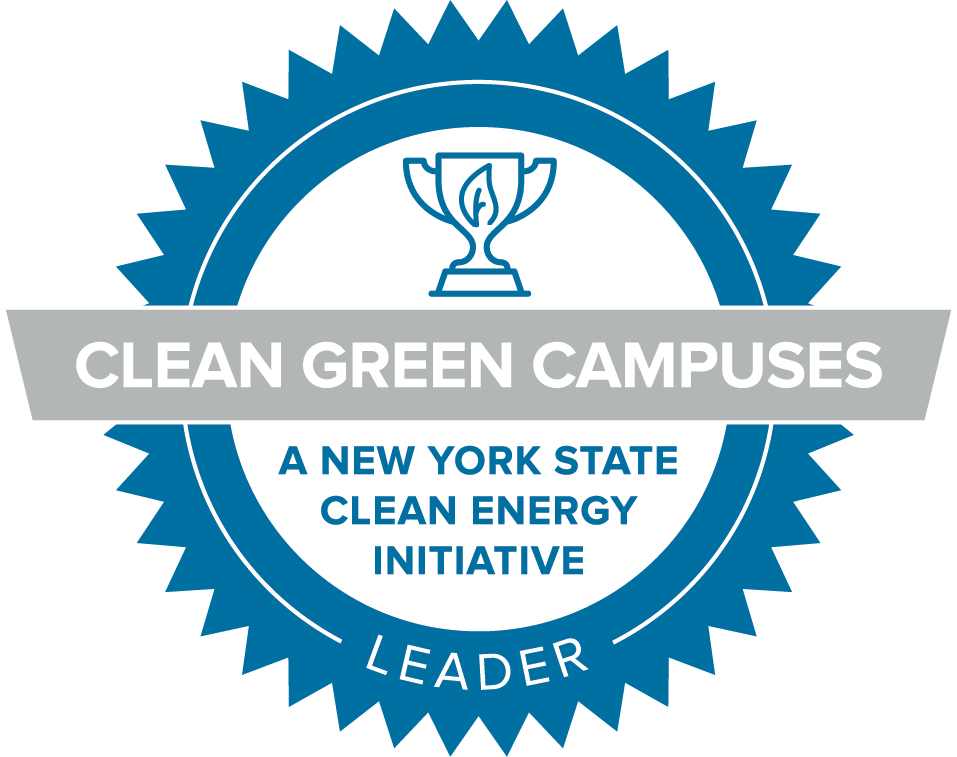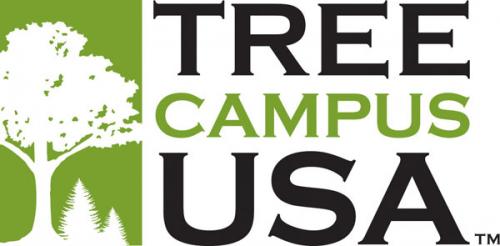Current Initiatives: Energy
Renewable Energy
The extraction, transportation and use of Skidmore's various energy sources have major environmental, social and economic impacts and are a major source of the college's institutional greenhouse gas (GHG) emissions. As a result, Skidmore has implemented a number of small-scale and large-scale renewable energy projects to shift the college toward a more renewable energy portfolio. These projects, along with numerous initiatives that improve energy efficiency and help promote behavioral changes, have significantly reduced the college's GHG emissions. Please click on the projects below to learn more.
Efficiency projects
Skidmore is an energy-conscious college and has committed to an array of initiatives to reduce its energy consumption.
- Occupancy sensor initiative: In the spirit of energy conservation and carbon emission reductions, Facilities Services
installed occupancy sensors in appropriate applications campuswide in offices, classrooms
and restrooms.
- Campus building temperature initiative: Skidmore's campus building temperature initiative was designed to save energy during the heating and cooling seasons by raising temperature
set points a few degrees during the cooling season and lowering the set points a few
degrees during the heating season. The program will have three different phases to
take into account the varied needs of work/school days, evening/weekend hours and
vacation/building closures.
- LED lighting: Skidmore is in the process of replacing older, inefficient exit lights with 4.7 watt
LED lights. Other lighting, such as parking lot and walkway lights, may also be upgraded.
- Variable-frequency drives: Skidmore has installed variable-frequency drives on all high-horsepower motors to
maximize energy efficiency. Variable frequency drives control motor speed by adjusting
the alternating current waveform. With the older variable-resistor method, more electrical
energy is lost as heat.
- Cold water wash: Skidmore's washing machines reduce energy demand by using only cold water.
- Updated transformers and motors: Skidmore has replaced older electric transformers and heating-plant motors with more efficient models.
ABOUT OUR Buildings
- Sussman Village Apartments: The Sussman Village Apartments were built to replace Scribner Village and features
geothermal heating and cooling. Skidmore used on-site stone to build retaining walls
and other landscaping features, and some walkways are made from recycled material
from the Scribner Village demolition. The area around the buildings uses xeriscaping
principles to reduce water usage.
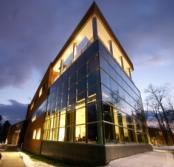 Arthur Zankel Music Center: The Arthur Zankel Music Center opened its doors to the community in February 2010.
As Skidmore's newest building, Zankel features a variety of sustainable features including
geothermal heating and cooling, energy-efficient lighting and windows, low-flow water
fixtures, increased insulation for sound and efficiency and occupancy sensors.
Arthur Zankel Music Center: The Arthur Zankel Music Center opened its doors to the community in February 2010.
As Skidmore's newest building, Zankel features a variety of sustainable features including
geothermal heating and cooling, energy-efficient lighting and windows, low-flow water
fixtures, increased insulation for sound and efficiency and occupancy sensors.- Murray-Aikins Dining Hall: The dining hall is also heated and cooled with geothermal energy. The building features
energy-efficient lighting and windows, low-flow water fixtures and a trayless dining
program.
- Northwoods Village Apartments: Built on a former "brown" site, the Northwoods Village Apartments are another geothermal project on Skidmore's campus. The apartments replaced off-campus student housing, which reduces campus car use and institutional greenhouse gas emissions. The building's trim is made from sustainably harvested wood, and the roofs, doors and steel frames are made from recycled material. The buildings were designed to use natural daylight, and all lighting fixtures in the complex use high-efficiency compact fluorescent light bulbs. Finally, construction was completed with low-emitting materials in paints, carpets and adhesives.
